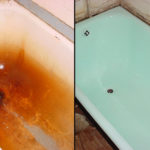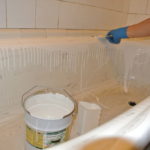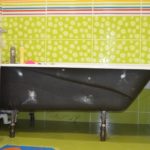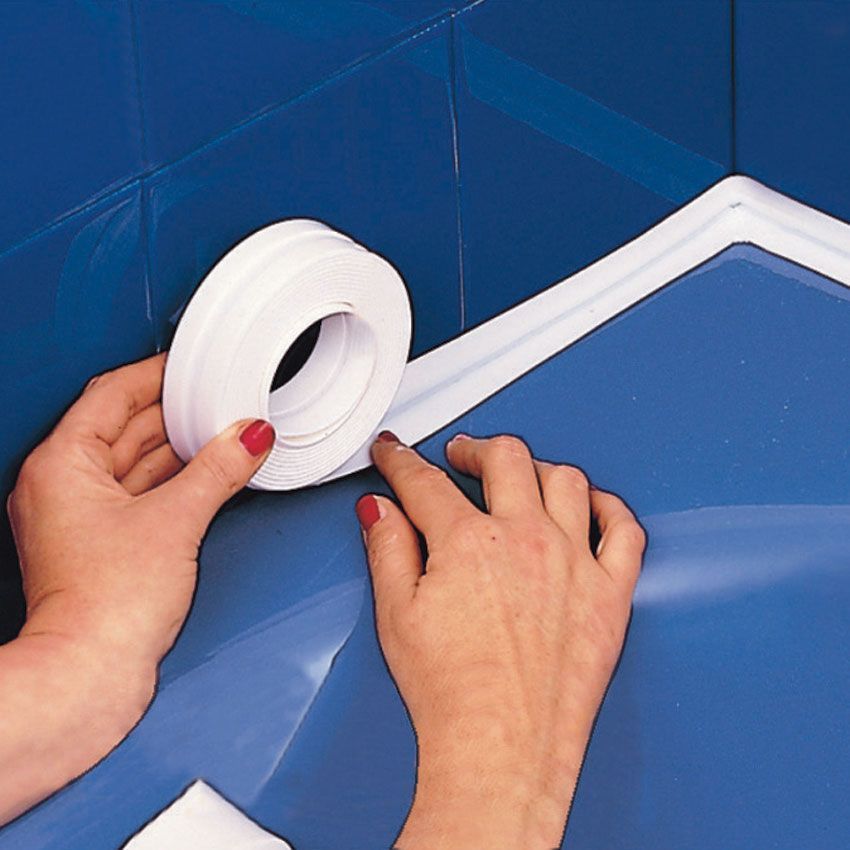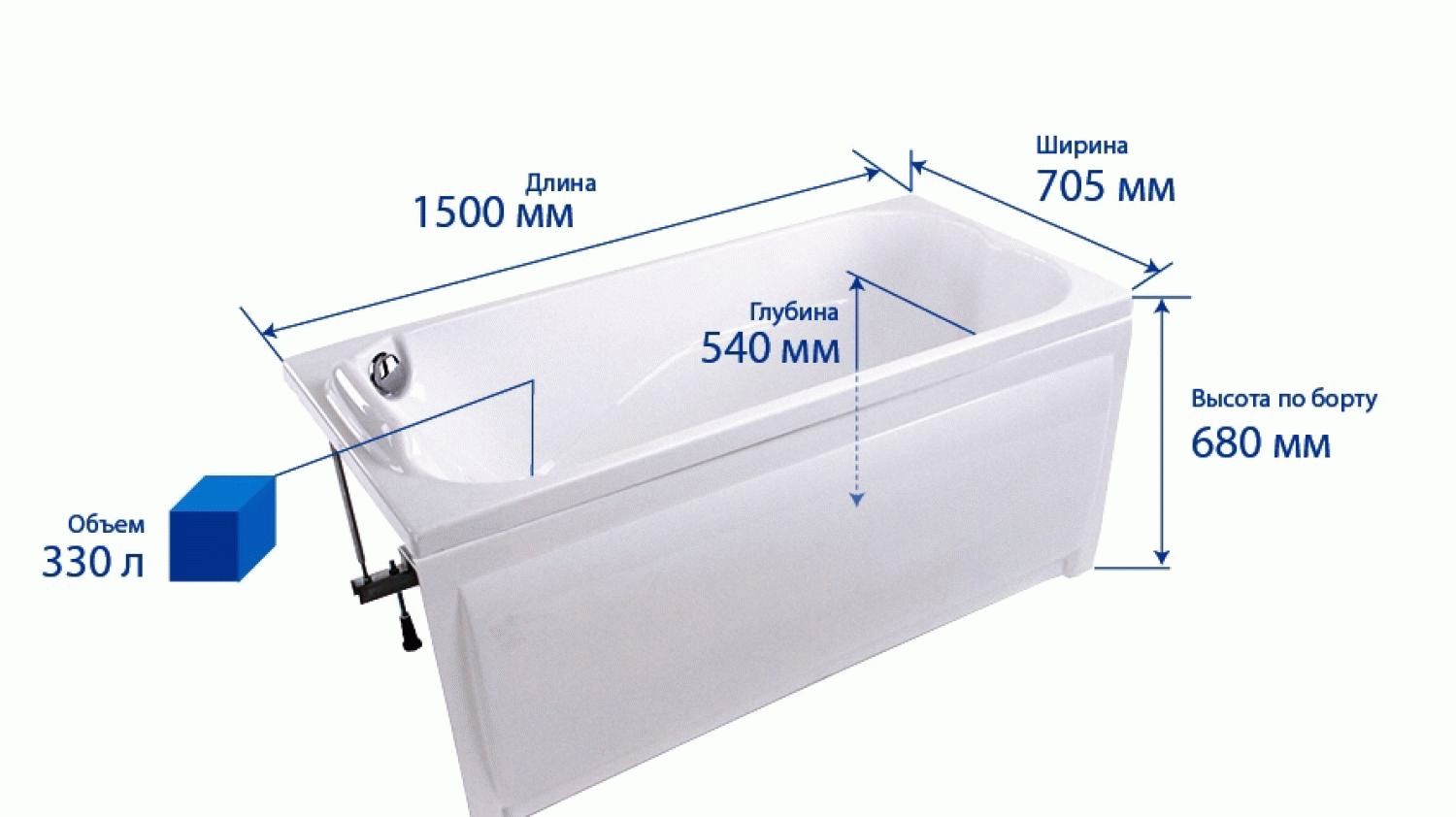Do-it-yourself bathtub restoration
Any product sooner or later gets old and wears out. For example, smudges and rust deposits may appear on the bathtub, it ceases to be glossy, and roughness can be felt under your hand. The pleasure of taking a bath in such... is below average. Need to change? But these are considerable costs. When replacing a bathtub, you will have to renovate the room itself, and this is an additional investment of money. There is a solution - to restore your favorite bathtub yourself. The stores have a large selection of different products that will help you successfully cope with this task.
The content of the article
Methods for restoring old bathtubs at home
Time spares no one and nothing. Even the bathtub, which seems to have recently been shining with whiteness, is already covered with smudges and deposits of rust. But instead of changing it, which is very expensive, it is better to restore the old coating.
The most common restoration methods include the following:
- enamel coating;
- acrylic filling.
Each of these methods has its own subtleties.
Coating the surface with enamel is one of the most inexpensive restoration methods. Enamel qualitatively fills all unevenness and roughness, hides rust and yellow spots, and eliminates shallow scratches. If the damage is significant, then the enamel is no longer suitable.It will not be able to repair chips, peeling coatings, or deep cracks.
Positive properties of enamel:
- low price;
- it does not reduce the volume of the bath;
- During operation there is no need to remove the siphon and tile covering on the sides.
Negative properties of enamel:
- working with it requires care, otherwise smudges and brush marks cannot be avoided;
- takes a long time to dry;
- cannot cope with serious defects;
- The warranty period is no more than five years.
Liquid acrylic does not require the use of a brush. It simply pours onto the walls and flows freely.
Positive properties of acrylic:
- the coating does not turn yellow;
- not afraid of chemicals and corrosion;
- suitable for different baths;
- does not form smudges;
- does not require removal of the bathtub;
- no air bubbles appear on the surface;
- lasts up to fifteen years;
- not afraid of chips and damage;
- holds heat well.

Negative properties of acrylic:
- it is necessary to remove the drain before work;
- if the bowl is uneven, then acrylic will repeat all the defects;
- afraid of high temperatures;
- takes a long time to dry.
Reference! If the acrylic is of low quality and all the technology is not followed during the work, then bubbles may appear, which will lead to deformation.
Preparatory work
Before starting restoration work, you need to remove all the old coating:
- We cover the floor under and around the bathtub with film and secure it with tape. This way we will save ourselves the extra work of cleaning the flooring.
- We wet the bath and add powder containing abrasive.
- Using sandpaper or a grinder, remove the coating.
- We wash away all the dirt.
- We wipe the entire inside of the bath with oxalic acid. To neutralize it, treat it with soda.
- Fill the bath with hot water. We wait about ten minutes.
- After this, drain the water and wipe the surface. To make it dry faster, you can dry it with a hairdryer.
- Places of chips and cracks are covered with putty. As soon as it hardens, smooth it out with sandpaper.
- Remove dust using a vacuum cleaner, wipe the entire surface with a damp cloth and wipe with solvent.
- Disconnect the shower hose and close the taps with film.
- Remove the siphon and drain.
- We install a container under the drain hole to drain the enamel or acrylic.
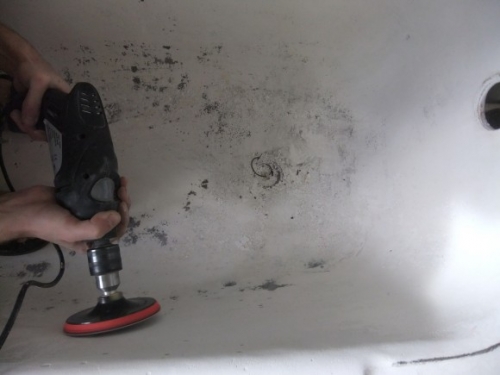
Restoring the surface with enamel
Once all traces of fat have been removed from the surface of the bathtub, restoration can begin. The whole procedure is divided into several stages:
- Following the manufacturer's recommendations, we make a mixture of hardener and base to obtain a homogeneous composition.
- Checking the brush. All bristles should be held firmly. First, it must be kept in water for a day.
- Dip the brush halfway into the enamel. The enamel should be applied from top to bottom.
- Apply the first layer. This will be the primer. Let's make it thin. We walk first horizontally, then vertically. If smudges appear, smooth them out with a brush.
- We do not leave excess enamel. There shouldn't be any puddles.
- Without waiting for the first layer to dry, apply the second.
- We inspect the surface. We paint over all missing places. There are only thirty minutes for finishing. After this time, the enamel will harden and it will no longer be possible to eliminate the defects.
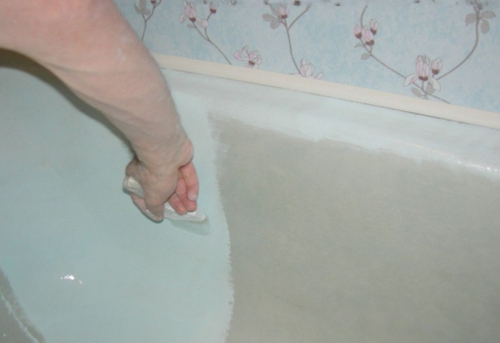
To ensure a high-quality and smooth surface, you will need to process it four times. After five days, you can mount the harness and use the bath.
Attention! All restoration work must be carried out in the summer. The room should have good ventilation. Windows need to be opened everywhere.Make sure that no children or pets are in the room.
How to update an old bathtub with your own hands using acrylic
Restoring a bathtub using acrylic is very similar to working with enamel. Surface preparation is carried out in the same way as in the previously described case. After this, you need to prepare the material for coating:
- Add hardener to acrylic and mix thoroughly.
- Wait ten minutes and mix again.
When the entire surface of the bath is prepared for use, restoration procedures can begin:
- Pour the acrylic into a convenient container.
- We start filling from the top edge. When you see that the mixture has reached the middle, slowly start moving further. If necessary, add additional mixture to the container.
- When the entire perimeter of the bath has been processed, repeat all the steps from the very beginning, but from the middle.
- If bubbles or smudges appear, remove them with a rubber spatula or brush.
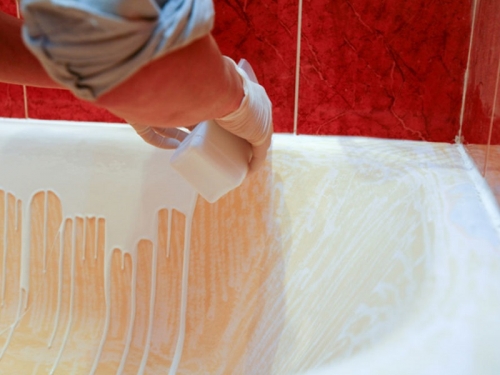
The treated surface does not dry quickly. The time depends on the type of material, as well as the temperature in the room.
Correcting minor bath defects
If there is minor damage to the bathtub, then there is no need to restore the entire surface. Defects can be removed locally. By following the recommendations, you will cope with this very quickly.
To seal through holes you will need epoxy. After filling the hole, apply a reinforcing mixture on top. In this case, you will need to purchase a special repair kit.
Chips and cracks can be repaired as follows:
- A rust removing liquid is applied to the damaged area, after which it is cleaned with powder.
- Treated with acetone to remove fat.
- The chips are repaired with putty and sanded.
- The enamel is applied to the damaged area.
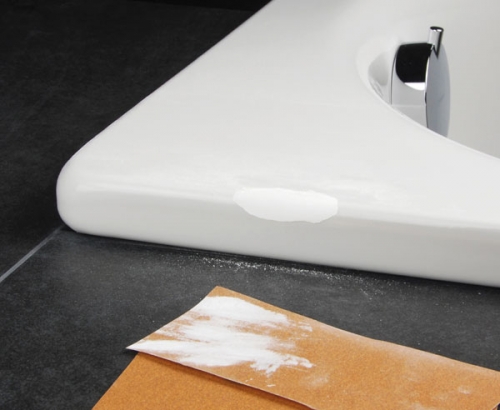
In order for the bathtub to serve for a long time, and repairs not to become an urgent necessity, it must be cleaned regularly and treated with care:
- Since enamel and acrylic are sensitive to abrasive, choose a detergent that will gently remove dirt.
- After the bath has been cleaned, it should be rinsed well with water.
- Do not wash your pets in it.
- Make sure that no water drips from the taps. Acrylic absorbs rust very well and will be very difficult to remove. To prevent plaque from forming, always wipe the bathtub without leaving a drop of water in it.
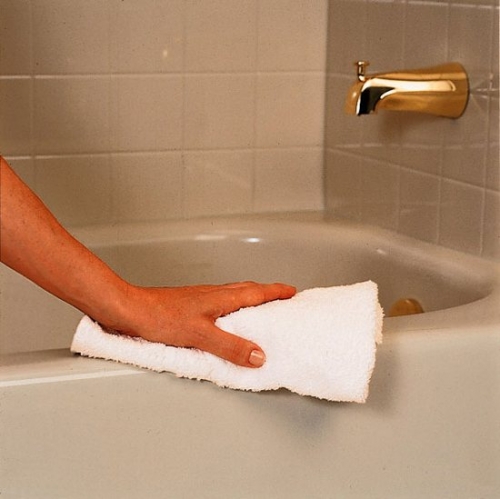
By following these simple recommendations, you will extend the life of your bathtub for a long time. She will look like new. And then you won’t have to think about how to restore its former whiteness and at the same time spend less money.

